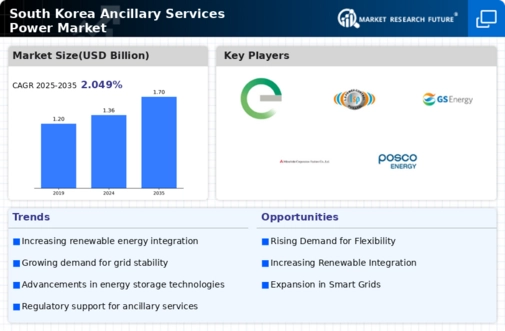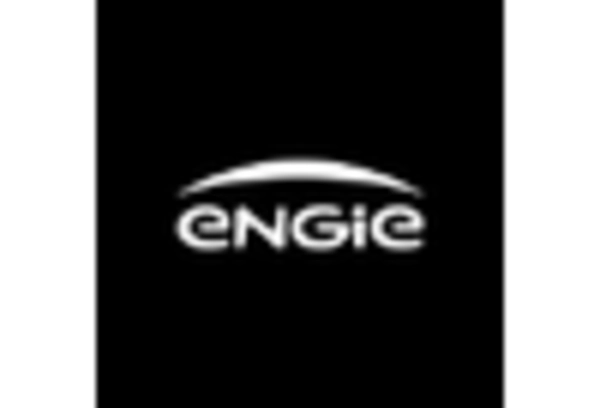Growing Demand for Grid Stability
The increasing reliance on renewable energy sources in South Korea has led to a heightened demand for grid stability, which is a crucial aspect of the ancillary services market. As the share of renewables in the energy mix rises, the need for ancillary services to manage fluctuations in supply and demand becomes more pronounced. In 2025, the contribution of renewables to the total energy generation is projected to reach approximately 30%, necessitating robust ancillary services to ensure reliability. This growing demand for grid stability is likely to drive investments in ancillary services, as utilities and grid operators seek to enhance their capabilities to maintain a balanced and stable grid. Consequently, the ancillary services-power market is expected to expand as stakeholders respond to these evolving requirements.
Regulatory Framework Enhancements
The regulatory landscape in South Korea is evolving, with new frameworks being established to support the ancillary services market. Recent policy initiatives aim to promote competition and innovation within the energy sector, which could lead to a more dynamic ancillary services market. For instance, the government has introduced measures to incentivize the participation of demand response programs, which can provide essential ancillary services. As these regulatory enhancements take effect, they are likely to create new opportunities for market participants, fostering a more competitive environment. This shift may encourage investment in ancillary services, ultimately contributing to the growth of the ancillary services-power market.
Rising Consumer Awareness and Participation
Consumer awareness regarding energy consumption and sustainability is on the rise in South Korea, influencing the ancillary services market. As consumers become more informed about their energy choices, there is a growing interest in participating in demand response programs and other ancillary services. This trend is expected to lead to increased engagement from residential and commercial consumers, who may seek to optimize their energy usage and contribute to grid stability. The potential for consumer participation in ancillary services could reshape market dynamics, as utilities and service providers adapt to meet the needs of a more proactive consumer base. This shift may drive innovation and investment in the ancillary services-power market.
Technological Innovations in Energy Management
Technological advancements in energy management systems are poised to transform the ancillary services market in South Korea. Innovations such as artificial intelligence and machine learning are enabling more sophisticated forecasting and optimization of energy resources. These technologies can enhance the efficiency of ancillary services by improving the accuracy of demand predictions and resource allocation. As companies increasingly adopt these advanced technologies, the ancillary services-power market is likely to see a surge in efficiency and effectiveness. The integration of cutting-edge energy management solutions may lead to a more responsive and resilient ancillary services framework, ultimately benefiting the overall energy ecosystem.
Increased Investment in Smart Grid Technologies
The transition towards smart grid technologies in South Korea is anticipated to significantly impact the ancillary services market. Smart grids facilitate better communication and control over energy distribution, which enhances the efficiency of ancillary services. With the government aiming to invest over $10 billion in smart grid infrastructure by 2027, the ancillary services-power market is likely to benefit from improved operational capabilities. These investments are expected to enable real-time monitoring and management of energy resources, thereby optimizing the provision of ancillary services. As smart grid technologies become more prevalent, the ancillary services-power market may experience growth driven by the need for advanced solutions to support grid reliability and efficiency.

















Leave a Comment